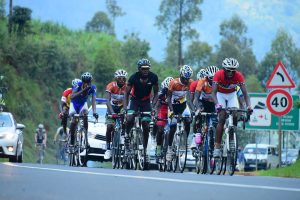Dreaming of encountering majestic wildlife against breathtaking African landscapes? While fly-in safaris offer speed and convenience, a road trip safari in Uganda provides an immersive and deeply rewarding adventure. This guide will navigate you through the exciting world of road trip safaris, highlighting their unique benefits, addressing key planning considerations, and answering the burning questions that prospective overland explorers often have. Discover why hitting the open road in Uganda can be the perfect way to experience the “Pearl of Africa” at your own pace and with unparalleled access to its natural wonders. Planning Your Road Trip Safari in Uganda.
What is the difference between a road trip safari and a fly-in safari?
The fundamental distinction lies in the mode of transportation between destinations. A fly-in safari utilizes chartered or scheduled flights to transport you directly from one lodge or park airstrip to another, minimizing travel time and maximizing time spent on wildlife viewing activities within specific areas. Conversely, a road trip safari involves traveling between national parks, game reserves, and points of interest by vehicle. This overland approach allows you to witness the diverse landscapes, interact with local communities along the way, and enjoy a more comprehensive exploration of the country beyond just the prime wildlife viewing spots. While fly-in safaris offer efficiency, road trip safaris provide a richer, more grounded travel experience.
What are the main advantages of choosing a road trip safari in Uganda?
Opting for a road trip safari in Uganda unlocks several compelling advantages. Firstly, it offers greater flexibility. You can often customize your itinerary, spend more time in areas that captivate you, and make spontaneous stops at local markets or scenic viewpoints. Secondly, it provides a more immersive cultural experience. Driving through the countryside allows you to observe daily life, interact with local people, and gain a deeper understanding of Ugandan culture beyond the tourist hotspots. Thirdly, it can be more budget-friendly than fly-in options, as you are primarily paying for vehicle rental, fuel, and potentially a driver-guide, rather than expensive chartered flights. Finally, the sense of adventure and discovery is unparalleled as you navigate the roads and uncover hidden gems at your own pace.
Is a road trip safari more or less expensive than a fly-in safari in Uganda?
Generally, a self-drive road trip safari can be significantly more cost-effective than a fly-in safari, especially for small groups or families. You primarily manage the costs of vehicle rental, fuel, park entry fees, and accommodation, allowing for more control over your budget. Guided road trip safaris, where you hire a vehicle with a driver-guide, will be more expensive than self-drive due to the added cost of the guide’s services, but can still be more economical than fly-in options, particularly when factoring in the enhanced wildlife spotting expertise and logistical support a guide provides. Fly-in safaris, with their reliance on often costly air travel and premium lodge transfers, typically represent the higher end of the safari budget spectrum.
What is the difference between a self-drive road trip safari and a guided one in Uganda?
In a self-drive road trip safari, you rent a suitable vehicle and navigate Uganda’s roads independently, following your own planned itinerary. This option offers maximum freedom and privacy but requires meticulous planning, strong navigational skills, and a good understanding of local driving conditions and regulations. Conversely, a guided road trip safari involves hiring a vehicle along with a professional driver-guide. The guide takes care of the driving, navigation, and often possesses extensive knowledge of wildlife, local cultures, and the best places to visit. While less independent, a guided safari offers enhanced safety, reduced stress, and a richer informational experience.
What are the key planning steps for a successful road trip safari in Uganda?
Thorough planning is crucial for a successful road trip safari in Uganda. Key steps include:
- Defining your itinerary: Researching national parks, game reserves, and other attractions you wish to visit, and mapping out a realistic route considering driving distances and time allocated for activities.
- Choosing the right vehicle: Selecting a reliable and capable 4×4 vehicle that can handle Uganda’s diverse road conditions, including potentially rough terrain in some park areas. Consider vehicle size based on the number of travelers and luggage.
- Booking accommodation: Reserving lodges, guesthouses, or campsites in advance, especially during peak season, to ensure availability and secure preferred options within and around the national parks.
- Obtaining necessary permits and passes: Arranging for park entry permits, gorilla or chimpanzee trekking permits (if applicable), and any other required documentation well before your trip.
- Preparing for safety and health: Ensuring you have necessary vaccinations, malaria prophylaxis, a well-stocked first-aid kit, and understanding basic safety precautions for wildlife encounters and road travel.
- Budgeting: Estimating all costs, including vehicle rental, fuel, accommodation, food, park fees, permits, and contingency funds.
- Arranging travel insurance: Securing comprehensive travel insurance that covers medical emergencies, evacuation, and trip interruptions.
What type of vehicle do you need for a road trip safari in Uganda?
A reliable 4×4 vehicle is highly recommended, if not essential, for a road trip safari in Uganda. Road conditions can vary significantly, ranging from well-maintained tarmac highways to bumpy, unpaved tracks within national parks. A 4×4 provides the necessary ground clearance, traction, and durability to navigate these diverse terrains safely and comfortably. Options range from Land Cruisers and Land Rovers to more budget-friendly alternatives like Toyota RAV4s (suitable for less demanding routes). Consider the number of passengers and luggage when selecting the vehicle size and ensure it is equipped with essential features like spare tires, basic tools, and potentially a roof rack.
What are the best countries for a road trip safari in Africa (besides Uganda)?
While Uganda offers a fantastic road trip safari experience, other notable countries in Africa also provide excellent opportunities for overland adventures. Kenya and Tanzania boast well-established tourism infrastructure and iconic parks like the Serengeti, Masai Mara, and Amboseli, offering diverse wildlife viewing and varied road conditions. Botswana is renowned for its wilderness areas like the Okavango Delta and Chobe National Park, often requiring 4×4 vehicles and self-sufficiency. Namibia presents dramatic desert landscapes and unique wildlife adapted to arid environments, with well-maintained gravel roads making self-driving relatively accessible. South Africa offers a wide range of options, from coastal routes to wildlife reserves like Kruger National Park, with good infrastructure and diverse accommodation choices.
How much flexibility does a road trip safari itinerary offer in Uganda?
Road trip safaris in Uganda can offer a high degree of flexibility, particularly self-drive options. You have the freedom to adjust your daily schedule, spend more time at locations you enjoy, and make detours to explore unexpected discoveries along the way. Even guided road trip safaris can often accommodate some level of customization in the itinerary, allowing you to tailor the trip to your specific interests and preferences in consultation with your tour operator. This flexibility is a significant advantage over more rigid fly-in itineraries.
What are the potential challenges and drawbacks of a road trip safari in Uganda?
Despite the many benefits, road trip safaris in Uganda can present certain challenges. Long driving distances between some national parks can lead to extended travel days. Road conditions can be unpredictable, with potholes, rough surfaces, and seasonal variations requiring careful driving. Navigation in remote areas might be challenging without reliable GPS or offline maps. Vehicle breakdowns, while hopefully infrequent, can occur and require preparedness. Security considerations necessitate awareness of your surroundings and adherence to local advice. Self-driving also requires responsibility for all logistical arrangements, which can be time-consuming.
Is a road trip safari a safe way to travel in Uganda?
With careful planning and adherence to safety precautions, a road trip safari can be a safe and rewarding way to travel in Uganda. It is advisable to research current safety conditions and heed local advice. If self-driving, ensure you are comfortable driving on potentially challenging roads and are aware of local traffic laws. Hiring a reputable driver-guide can significantly enhance safety and security, as they possess local knowledge and experience. Avoid driving at night in unfamiliar areas and take precautions to secure your belongings.
What should you pack for a road trip safari in Uganda?
Packing for a road trip safari in Uganda requires consideration for varying climates, outdoor activities, and potential vehicle needs. Essentials include:
- Lightweight, breathable clothing in neutral colors.
- Warm layers for cooler evenings and higher altitudes.
- Sturdy, comfortable walking shoes or hiking boots.
- A wide-brimmed hat, sunglasses, and sunscreen.
- Insect repellent and a mosquito net (for basic accommodations).
- A basic first-aid kit with personal medications.
- A reliable map, GPS device, or offline navigation app.
- Binoculars for wildlife viewing.
- A camera with sufficient memory cards and battery power.
- A reusable water bottle and water purification tablets or filter.
- A UK-style power adapter.
- A flashlight or headlamp.
- Copies of important documents (passport, permits, insurance).
How do you book a road trip safari in Uganda?
You can book a road trip safari in Uganda through various avenues. For a self-drive option, you would typically rent a suitable vehicle from a reputable car rental agency in Kampala or Entebbe. It’s crucial to compare rental agreements, insurance coverage, and vehicle condition. For a guided road trip safari, you would contact local tour operators specializing in overland safaris in Uganda. They will offer pre-designed itineraries or can customize one based on your interests. Check reviews, compare prices and inclusions, and ensure the operator is licensed and reputable.
How do you handle fuel, road conditions, and navigation on a road trip safari in Uganda?
Fuel is generally available in major towns and trading centers, but it’s wise to fill up whenever you have the opportunity, especially before embarking on long drives to more remote areas. Road conditions can vary greatly; be prepared for both well-maintained tarmac and rough, unpaved roads, particularly within national parks. Drive cautiously, adjust your speed to the conditions, and be aware of potential potholes or obstacles. Navigation requires careful planning. While some main roads are signposted, a reliable GPS device or a smartphone with offline maps (like Google Maps or Maps.me with downloaded Uganda maps) is highly recommended. Carrying a physical map as a backup is also a good idea. If you hire a driver-guide, they will handle all these aspects for you.
A road trip safari in Uganda offers an unparalleled sense of adventure and connection with the land and its wildlife. By understanding the benefits, planning diligently, and being prepared for the journey, you can unlock an unforgettable exploration of the “Pearl of Africa” from the open road.




